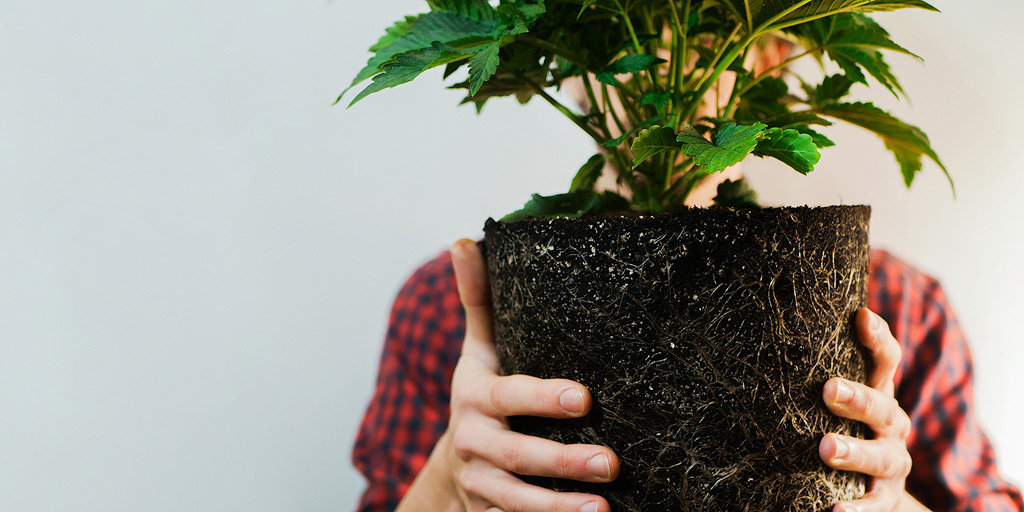
If you are as passionate about growing cannabis plants as we are, you know that proper care of your plants leads to higher yields. One aspect often overlooked in both indoor and outdoor cannabis cultivation is repotting. Repotting can make a world of difference to the health and yield of your cannabis plant. Why should you do this, you ask? How much potting soil do you need? What are the pros and cons of a pot versus the ground? And what is the difference between potting soil and garden soil? Dive with us into this essential knowledge and discover how to take your cannabis cultivation to the next level. Finally, you can read in this blog how to repot your own plants step by step.
In this article:
- Why repot a cannabis plant?
- How many liters of potting soil for a cannabis plant?
- Is a bigger pot always better?
- Cannabis plant in pot vs. ground: pros and cons
- Difference between potting soil and garden soil
- How to repot step by step
- What are the best pots for cannabis plants?
- Tips for choosing the right pot
Why repot a cannabis plant?
Repotting a cannabis plant is like a fresh start for your plants. When the roots fill too much space in the pot, they can become entangled and no longer absorb nutrients efficiently. By repotting, you give the roots more room to grow, which leads to a healthier, stronger plant. Moreover, repotting prevents your plant from getting root rot due to overly wet soil, as a larger pot allows the soil to dry out better between waterings. A happy plant means thick, full buds!
How many liters of potting soil for a cannabis plant?
Always choose the right pot size for each growth stage and plant. For autoflowering varieties, a pot of 10 to 20 liters is usually sufficient, while photoperiod plants often benefit from a larger pot. Think 20 to 50 liters. The larger the pot, the more space the roots have to develop, ultimately resulting in a bigger and healthier plant. A good guideline is to start with a smaller pot of about 5 liters for seedlings and transfer them to the final pot after a few weeks. Always ensure a good potting soil mix that is airy and nutrient-rich.
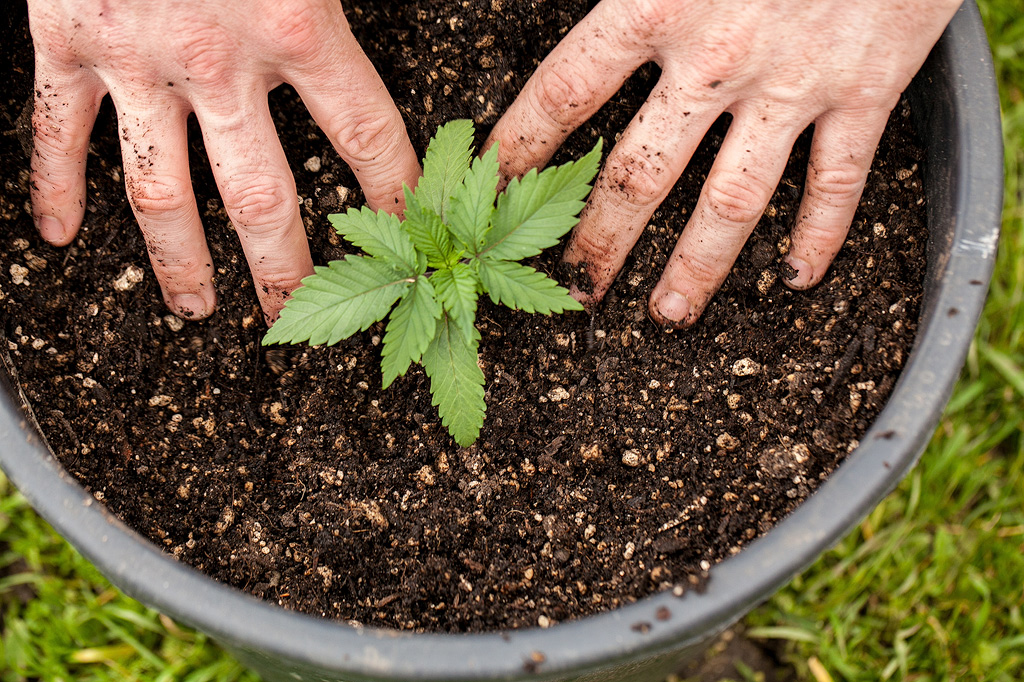
Is a bigger pot always better?
It may seem logical to think that a bigger pot is always better for your cannabis plant. After all, you would save money if you choose a bigger pot right away and don't have to buy a bigger one each time. However, this is usually not the case. A pot that is too large for a young plant can cause problems. If the roots can't yet utilize the extra space, the soil stays wet longer, which can lead to root rot and mold formation. That's why a smaller pot is recommended for younger and smaller plants. It is important to match the pot size to the growth phase of your plant. Start with a smaller pot and repot into a larger pot as your plant grows. This gives the roots a chance to develop gradually without the risk of waterlogging. You want to avoid water standing in the pot.
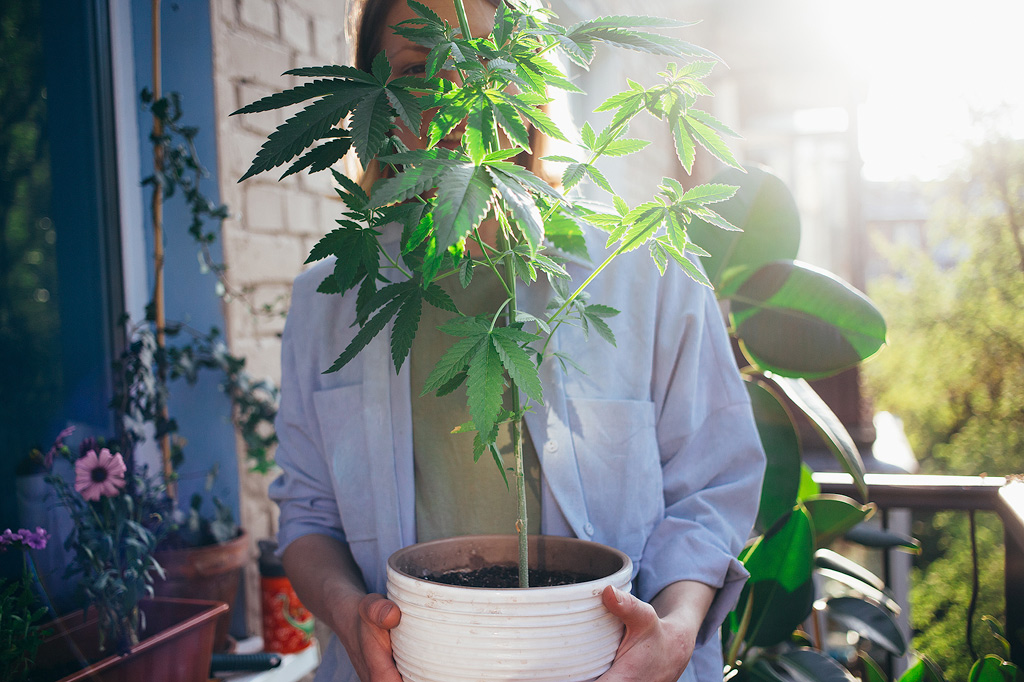
Cannabis plant in pot vs. ground: pros and cons
Growing cannabis in a pot has the major advantage that you can easily move the plant to offer it the best growing conditions. This is ideal for urban gardens or balconies. Additionally, you have more control over nutrients and water levels in a pot. However, a pot can limit root growth and requires more frequent watering. On the other hand, the ground offers your plant unlimited space for root development and better access to natural nutrients. This can result in larger plants with higher yields, but you have less control over conditions, and the risks of pests, poor drainage, and diseases can be greater.
Difference between potting soil and garden soil
Potting soil and garden soil are not the same. Choosing the right soil can make a difference for your cannabis plant. Potting soil is specially designed for plants in pots; it is light, well-drained, and often enriched with nutrients that plants need in their early stages. Garden soil, on the other hand, is heavier and can compact quickly, which is not ideal for pots. It is usually suitable for improving the soil in your garden. For your cannabis plants in pots, you want to choose high-quality potting soil that offers good drainage and aeration so the roots don't suffocate and your plant can grow optimally. So choose potting soil if you are going to repot a cannabis plant.
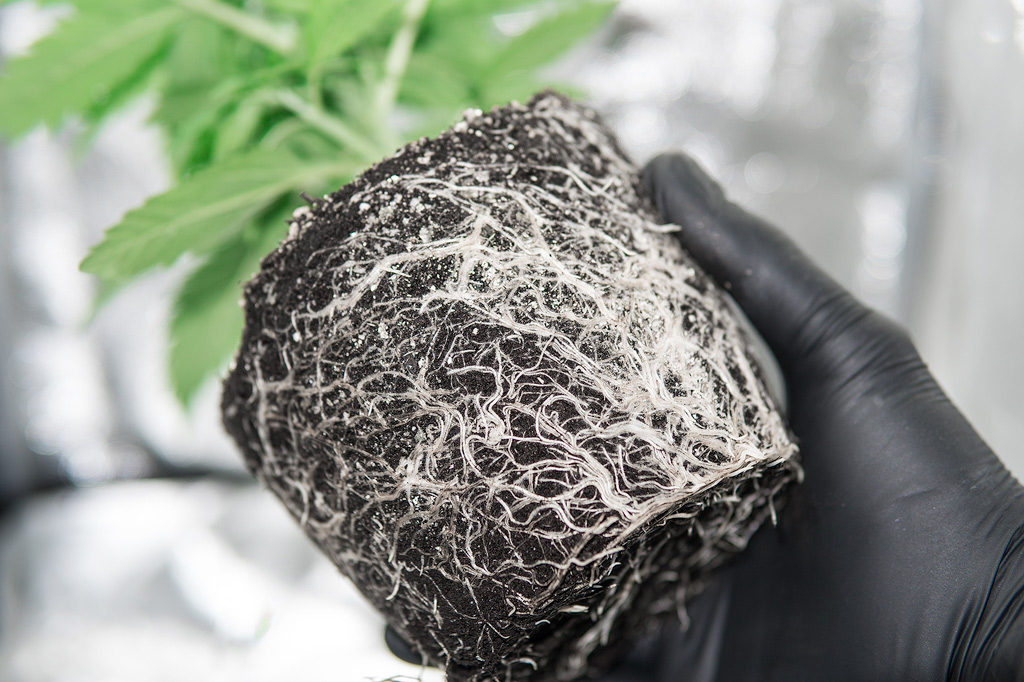
How to repot step by step
Repotting your cannabis plant can be an exciting moment, especially if you want to do it right to minimize stress for your plant. Here is a step-by-step guide to help you successfully repot your cannabis plant:
Preparation
- Choose the new pot that is large enough for the next growth phase of your plant.
- Ensure high-quality potting soil that is well-drained and nutrient-rich.
- Fill the new pot about a third full with potting soil.
Watering
-
Water your cannabis plant in the old pot the day before repotting. This makes it easier to remove the plant from the pot and helps protect the roots.
Loosening the plant
- Gently turn the old pot upside down and support the plant with your hand. Tap gently on the edges of the pot to loosen the root ball.
- Carefully pull the plant out of the pot. If necessary, use a knife to cut along the edges of the pot if the roots are stuck.
Inspecting the roots
-
Check the roots for signs of disease or rot. Healthy roots are white and firm. Carefully remove any damaged or dead roots with clean scissors.
Placing in the new pot
- Place the plant with the root ball in the center of the new pot on the layer of potting soil.
- Fill the pot around the root ball with potting soil and press it gently to remove air pockets. Ensure the plant is firmly in the pot but not buried too deep.
Additional watering
- Water the plant after repotting to settle the soil and help the roots adapt to their new environment.
- Avoid overwatering, as the new potting soil is already moist from the previous day.
Aftercare
- Place the repotted plant in a spot with indirect sunlight and monitor the ambient temperature and humidity to minimize stress.
- Water the plant regularly in the following days, but ensure the soil does not stay too wet.
With these steps, you give your cannabis plant the best chance to adapt to its new home and grow into a healthy, vigorous plant.
What are the best pots for cannabis plants?
Choosing the right pot for your cannabis plants is crucial for their health and growth. There are different types of pots available, each with its own pros and cons. Here are some of the best options:
Fabric pots (Rootmaxx, Smart Pots or Air-Pots)
-
Pros: These pots promote air pruning, where the roots stop growing when they hit the air and then form new roots. This leads to a stronger and healthier root system. They also offer excellent drainage and aeration.
-
Cons: Fabric pots dry out faster than plastic pots, so you need to water your plants more frequently.
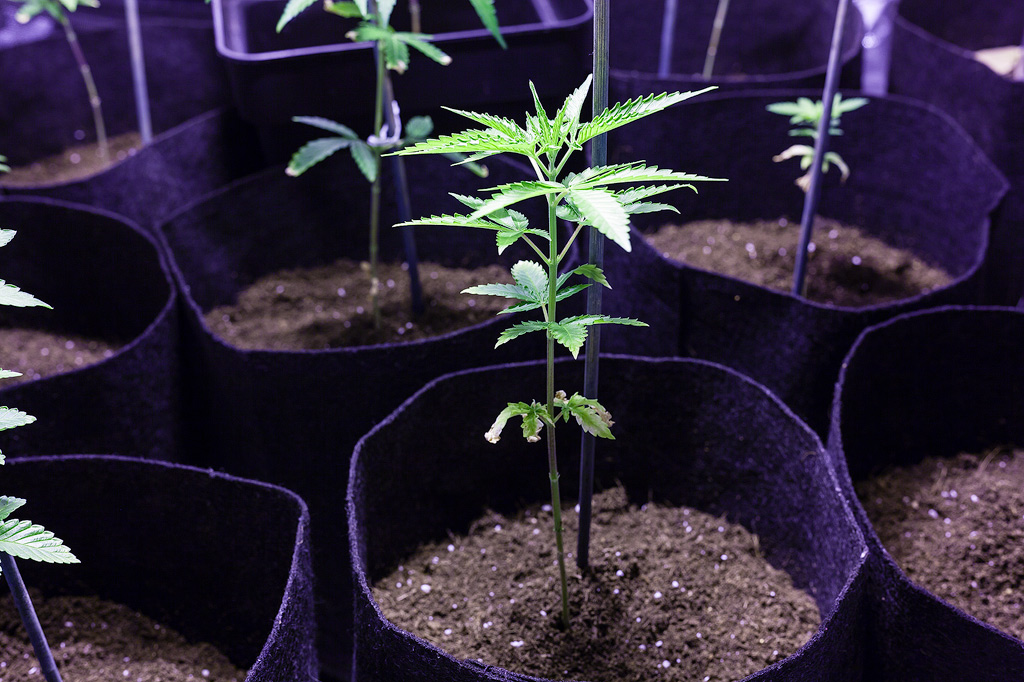
Order your Rootmaxx fabric pot here!
Plastic pots
- Pros: Plastic pots are light, affordable, and easily available in various sizes. They retain moisture well, which means you need to water less frequently.
- Cons: They offer less good aeration and drainage than fabric pots, which can lead to root rot if you're not careful.
Grow Bags
- Pros: Grow bags are flexible, affordable, and offer good aeration for the roots. They are also easy to store and transport.
- Cons: Like fabric pots, grow bags dry out faster and can be less sturdy, requiring extra support.
Terracotta pots
- Pros: These pots are aesthetically pleasing and offer excellent drainage. They are heavy, which helps to keep larger plants stable.
- Cons: Terracotta pots can be more expensive and they retain moisture less well, meaning you need to water more frequently. They are also fragile.
Self-watering pots
- Pros: Pots like Autopot and other self-watering pots have a built-in reservoir that stores water and gradually releases it to the plant. This can be convenient for growers who cannot water daily.
- Cons: They can be more expensive and the reservoir can sometimes clog, which can hinder watering.

Looking for the self-watering Autopot system?
Check out this Autopot Starterkit!
Tips for choosing the right pot
- Size: Choose the pot size depending on the plant phase and the final size of the plant. For seedlings, small pots of 5-10 liters are suitable, while mature plants grow better in pots of 20-50 liters. Cannabis trees can be placed in the largest pots of 70 to 150 liters. These types of pots are often harder to find. Tip: buy a mortar tub at the hardware store and drill holes in the sides before putting the plant in it. This ensures sufficient air circulation and drainage.
- Drainage: Make sure that whichever pot you choose, it has good drainage holes to prevent waterlogging and root rot.
- Aeration: Pots that allow good air circulation help in the development of a healthy root system.
As you can see, choosing the right pot takes some consideration. Need more help with growing cannabis? Check out our Cannabis Growing for Beginners in 8 Simple Steps, where you'll find many more links to useful articles on growing techniques, diseases, and increasing your yield.